Research Projects
Data-driven Modeling and Production System Real-time Diagnosis and Prognosis


While information about production processes has been becoming increasingly transparent, detailed, and real-time, the utilization of this information for real-time manufacturing analysis and decision-making has been lagging behind largely due to the limitation of the traditional methodologies for production system analysis, and a lack of real-time manufacturing processes modelling approach and real-time performance identification method. Therefore, our research focuses on developing innovative data-driven stochastic manufacturing system models and data-driven diagnostic and prognostic methods to describe production dynamics and identify the causes of permanent production loss in both deterministic and stochastic scenarios.
The research integrates available sensor data with the knowledge of production system physical properties. Such methods can be transferred to a computer for system self-diagnosis/prognosis to provide users with deeper understanding of the underlying relationships between system status and performance, and to facilitate real-time production control and decision making. This effort is a step forward to smart manufacturing for system real-time performance identification in achieving improved system responsiveness and efficiency.
Smart Manufacturing System Real-time Control for Energy Aware Operations
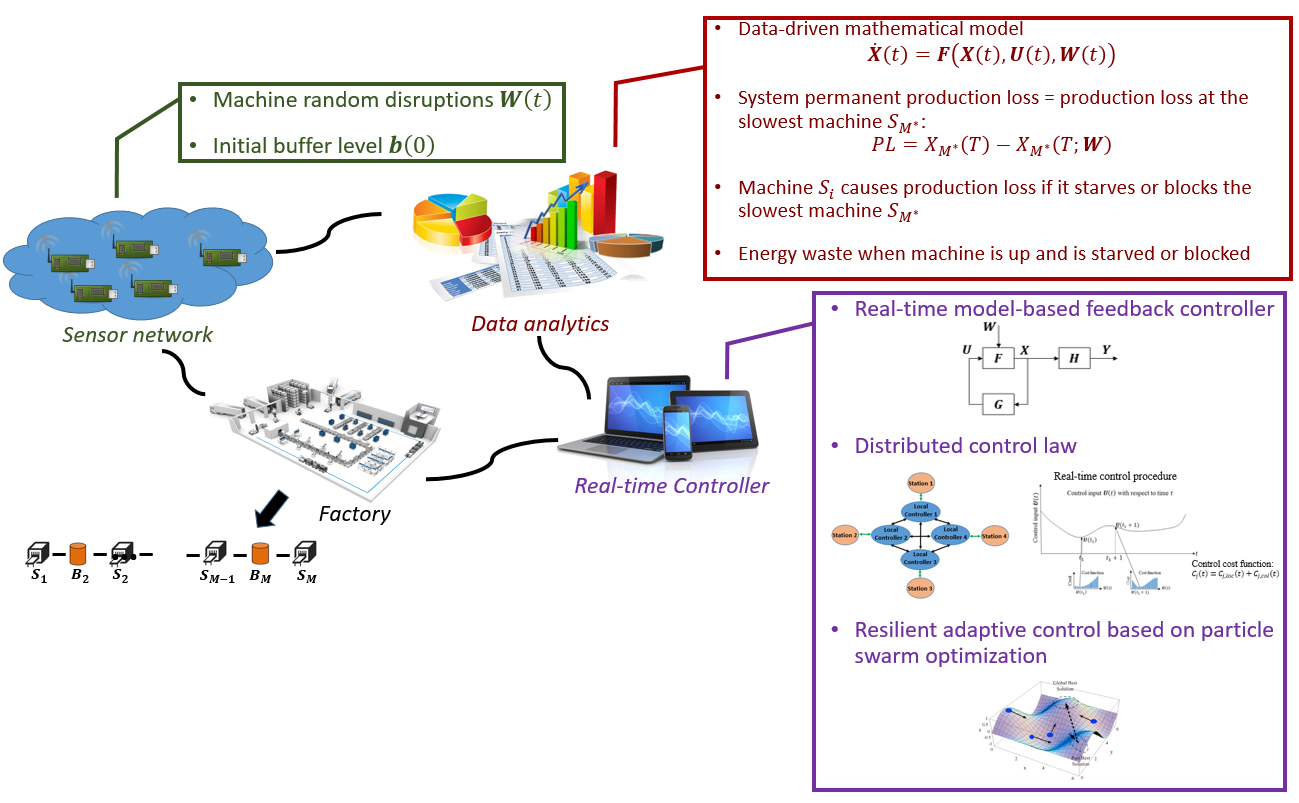
As manufacturers face the challenges of increasing global competition and energy saving requirements, it is imperative to seek out opportunities to reduce energy waste and overall cost. This research establishes theory and develops automated real-time distributed control schemes to cope with the complex nature of manufacturing processes and systems to achieve higher energy efficiency and profit. The problem is formalized as an online decision-making problem under uncertainty. A supervisory control architecture with partial decentralization is adopted
Analysis of Gantry Work Cell
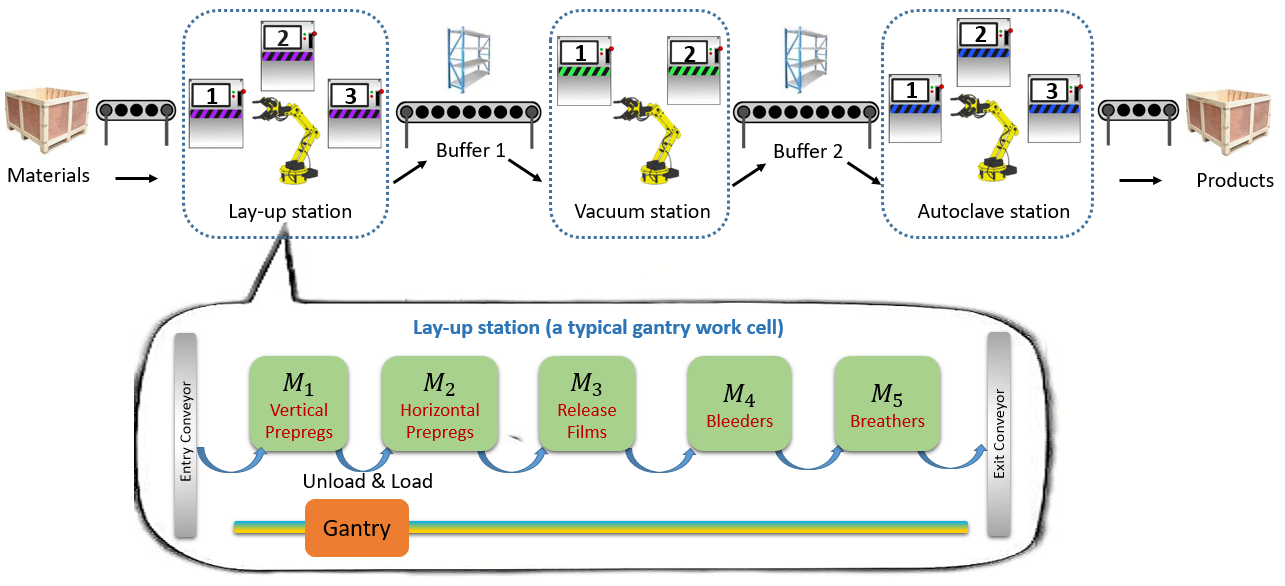
Schematic of a composite production line & Structure of a gantry work cell
A production line in a factory can be made up of multiple production stations or work cells. Each station/work cell includes one or multiple machines or equipment performing a specific function, such as pretreatment, multilevel processing, testing and assembly. In each work cell, robots or humans move between machines/process steps to load and unload parts. In this project, we focus on the analysis of this kind of work cell, referred to as a gantry work cell.
In manufacturing systems research, tremendous works focus on the analysis of production lines from the high system level point of view, where the stations are abstracted and treated as one entity without considering inner interactions within each station. On the other hand, manufacturing process researches mainly focus on the physical parameters and their impacts of a specific operation/process while ignoring the interrelationships between operations. To fill the gap between a high level production system analysis and a specific process analysis, we are working on:
- Establish a mathematical model for real-time performance analysis of a gantry work cell
- For fixed sequence gantry moving policies, find system properties and performance evaluation explicitly
- Developing reconfiguration strategies for the gantry work cell in face of market demand fluctuation
- Apply machine learning methods or other control methods to optimize the gantry moving policies
Integrated Modeling and Real-time Control of Advanced Manufacturing System (Battery Manufacturing)

Battery Manufacturing System
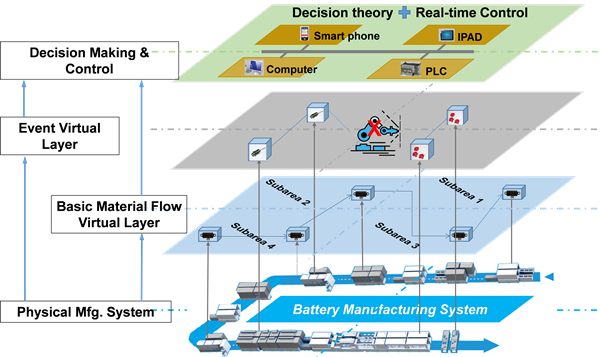
Virtual Multi-layer Sensing system Framework
The rapid development in battery technology and increasing needs in energy storages has introduced enormous challenges and complexities on battery production systems. Battery manufacturing must quickly ramp up with the newly developed technologies, new tools and equipment, and resources in order to meet battery production needs for a variety of stationary and motive applications. To this end, our research team is focusing on developing innovative methods to address this fast changing and challenging problems. Specifically, we are working on:
- Developing an computationally efficient tool for real-time performance evaluation/prediction, which can be used to detect performance drift or potential deterioration
- Developing simulation and analytical models to evaluate the overall production capacity and perform real-time costing analysis and optimization
- Establishing a virtual multi-layer sensing framework and event-based modeling to directly model distributed sensor systems
- Establishing collaborative information processing on the sensing framework to effectively identify system transient loss and root causes of system inefficiency, and create system learning method to optimize sensor network design
- Establishing an intelligent online control method to integrate decision theory with control for dynamic adaptive resource allocation and distributed management
Integrated Modeling & Control for Energy Efficient Management in Manufacturing Facilities
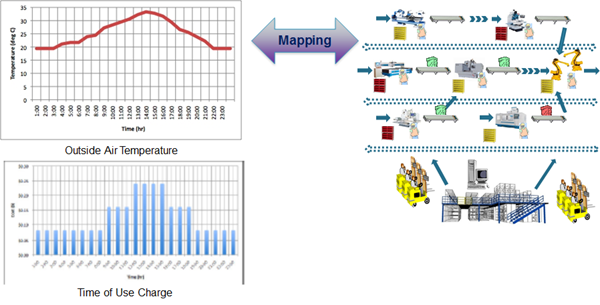
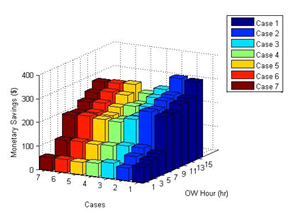
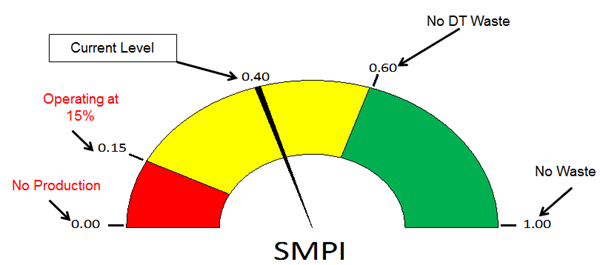
The objective of this project is to combine sensor information processing and intelligent real-time control to coordinate production operations and HVAC systems to significantly improve energy efficiency in manufacturing facilities while maintaining desired production throughput and occupant comfort. Utilizing simulation methods we have combined the two largest energy consumers in a manufacturing facility: the production line and the HVAC system. By joining these two systems we created an overall control scheme to coordinate shut offs of certain machines without any throughput loss on the production line. These timed shut offs are called opportunity windows. The opportunity windows for the production line are synced with the peak periods of energy demand for the HVAC system to optimize the energy cost savings.
Composite Manufacturing
Automation of composite laminates manufacturing is instrumental in meeting the growing demand for composites and promises to revolutionize composite-dependent industries. However, the few existing layup automation systems are prohibitively expensive and are not fully optimized for product quality. This project aims to establish a systematic framework that will assist in solving the critical challenges in automation, monitoring and control for composite laminates manufacturing. We focus on: (1) create multi-physics manufacturing process models to predict impacts of process parameters on manufacturing induced defects and final product quality, and conduct experiments to verify the models; (2) gain an understanding on the roles of quality inspection and optimal control in increasing productivity through manufacturing dynamics simulations; and (3) obtain the knowledge on how to control the physical process to ensure the product quality as a guideline for manufacturing practices.
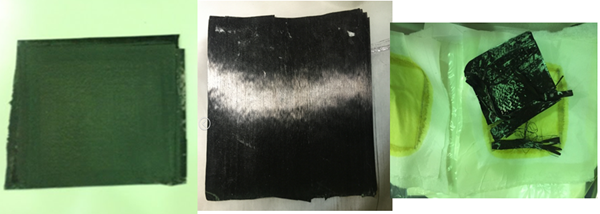
Laminate fabrication
Supply Chain – Containerization Method Analysis and Control
In last decade, global competition has forced manufacturers to optimize logistics. An innovative containerization method (CM) provides a new perspective for optimizing logistics cost saving, where collapsible containers are used to reduce the frequency of return freight. However, the optimization of logistic cost is complicated due to the tradeoffs with many factors, such as custom demand, inventory, production throughput and uncertainty. Therefore, the appropriate model and accurate estimation of the total cost and system performance are of great importance for decision-making. Based on this estimation, an effective control method can be selected for improving the optimization.

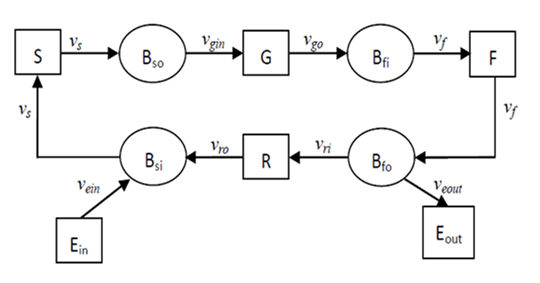
Coordinated Control for Distributed Generation(DG) Micro-grid
Driven by wind and solar photovoltaics technology, the power industry is shifting towards a distributed generation (DG) paradigm. We focus on DC micro-grid, and then extend to grid connected DG system. The current research on energy management will provide energy consumption optimization, reduce peak power and enable prioritized islanding, as well as create an opportunity for excess produced energy to be stored to battery or sold back to the grid. It will monitor and operate remotely and automatically, further reducing overall costs.
Simulation Modeling and Analysis for Readmission
Readmission to emergency facilities is a frequent and costly problem. Recent studies have demonstrated that 20% of Medicare beneficiaries are readmitted within 30 days. Approximately one-quarter of all patients discharged from a hospitalization for heart failure are readmitted within 30 days. Thus, contributions on understanding the interactions between health care provider and health care demands, as well as the incentives of the agents to invest on Etele-health technology and E-medication manager into the health care system have high potential for reducing readmission rate.
We used a system simulation and analysis methodology to identify the key factors in the after-discharging systems which may contribute to high readmission rate, and hence to improve system performance and reduce readmission rate with lower cost.
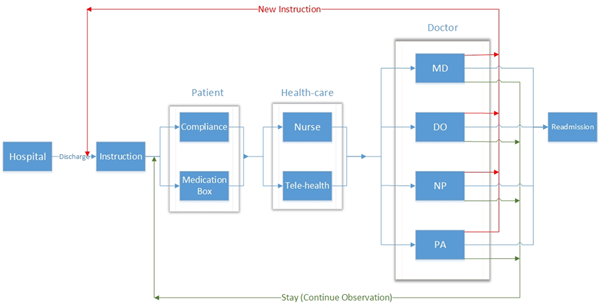
Readmission Process Flow Chart


